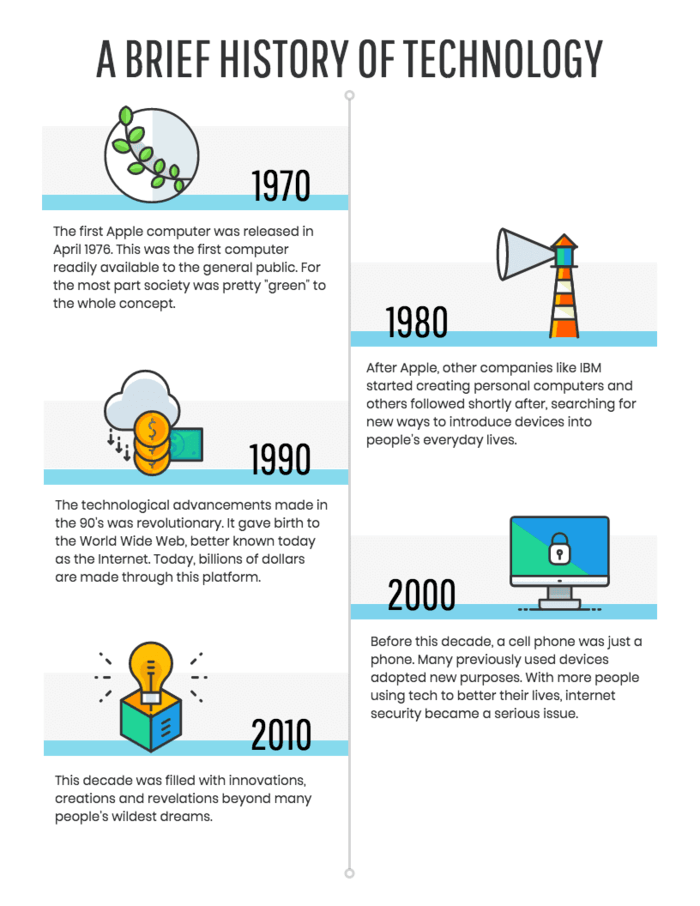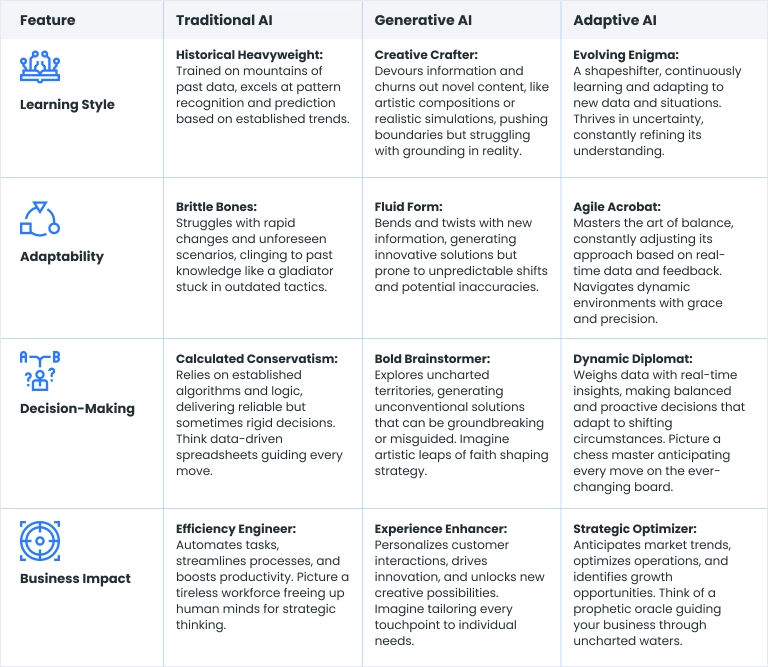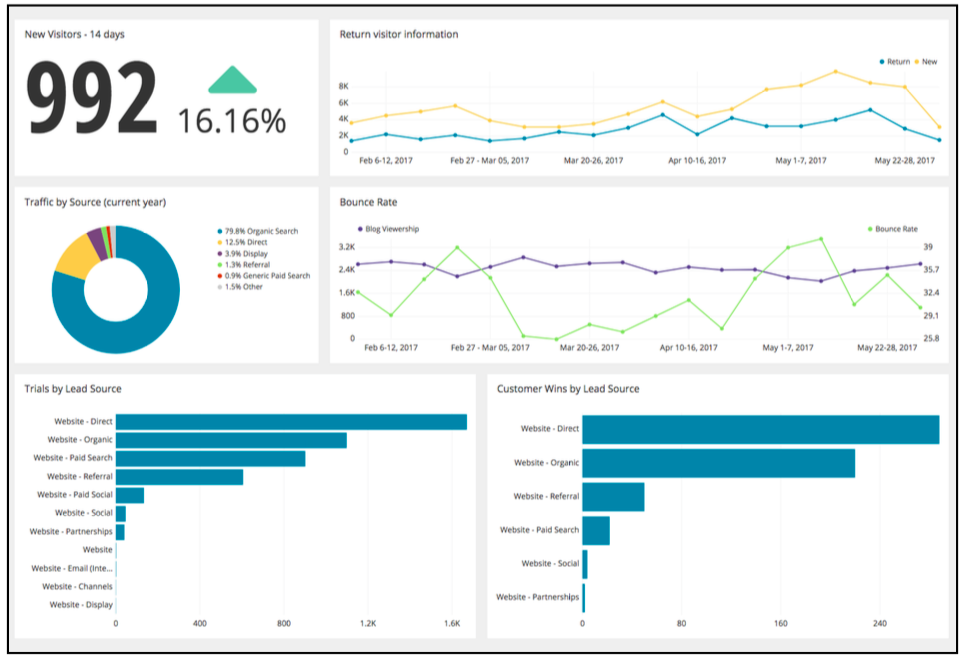Smart Icon Libraries: Transforming Document Design Through Visual Intelligence
Elevate your document design with strategic visual elements
I've witnessed firsthand how the landscape of document design has evolved dramatically in recent years. What was once dominated by walls of text has transformed into visually rich experiences that engage and inform simultaneously. In this guide, I'll walk you through how smart icon libraries are revolutionizing document design and how you can leverage these powerful visual tools to transform your own work.
The Evolution of Visual Communication in Documents

I've observed a remarkable shift in document design over the past decades. What once consisted primarily of dense paragraphs has evolved into visually-enriched experiences that engage readers on multiple levels. This transformation isn't just aesthetic—it's rooted in our fundamental cognitive processes.
Our brains process visual information 60,000 times faster than text, which explains why documents with strategic visual elements consistently outperform their text-only counterparts in engagement and retention metrics. Smart icon libraries have emerged as a critical tool in this visual revolution, allowing for precise communication of concepts without language barriers.
The Evolution of Document Design
From text-centric to visually intelligent documents
flowchart LR
A[Text-Only Era] -->|1980s-1990s| B[Clip Art Phase]
B -->|1990s-2000s| C[Stock Icon Libraries]
C -->|2000s-2010s| D[Custom Icon Systems]
D -->|2010s-Present| E[AI-Enhanced Smart Icons]
style A fill:#f9f9f9,stroke:#ccc
style B fill:#f9f9f9,stroke:#ccc
style C fill:#f9f9f9,stroke:#ccc
style D fill:#f9f9f9,stroke:#ccc
style E fill:#FF8000,stroke:#FF6000,color:white
Looking back, I can see how we've moved from the primitive clip art of early word processors to today's sophisticated, context-aware icon systems. This evolution reflects our growing understanding of how visual elements can enhance comprehension and create more engaging document experiences.
"Visual communication isn't just about making documents pretty—it's about making information more accessible, memorable, and impactful."
Understanding Smart Icon Libraries
When I talk about smart icon libraries, I'm referring to collections of visual elements that go far beyond static images. These modern systems incorporate intelligence through contextual awareness, scalability, and seamless integration with various platforms.

Core Components of Modern Icon Libraries
Vector-Based Architecture
Infinitely scalable without quality loss, adapting to any document size or resolution
Semantic Tagging
Intelligent metadata that enables contextual search and suggestion systems
Style Variants
Multiple visual treatments of the same concept (filled, outlined, duotone, etc.)
API Integration
Direct connection to document creation platforms for seamless implementation
What truly sets modern icon libraries apart is their ability to understand context. PageOn.ai's AI Blocks system exemplifies this evolution—it doesn't just provide icons but understands the document's purpose and suggests visual elements that enhance the specific content. I've found this contextual awareness to be game-changing when creating documents that need to communicate complex ideas quickly.
Smart Icon Library Types
Comparing features across different smart icon systems
The integration capabilities of these smart libraries mean I no longer need specialized design software to implement professional-quality visuals. With PageOn.ai, I can simply describe what I'm trying to communicate, and the system intelligently translates my needs into appropriate visual elements—all without requiring me to have deep knowledge of design principles or software.
Strategic Icon Selection for Document Enhancement
Choosing the right icons isn't just about aesthetics—it's about strategic communication. I've found that effective icon selection requires understanding both your audience and the specific purpose of your document.
Principles of Effective Icon Selection
Contextual Relevance
Icons must directly relate to the surrounding content, reinforcing rather than distracting from the message.
Visual Consistency
Maintain a unified style throughout your document to create a cohesive experience.
Recognition Speed
Choose icons that can be quickly understood without requiring significant cognitive processing.
Cultural Sensitivity
Be aware of how symbols may be interpreted differently across cultural contexts.
Color Psychology in Icon Design
How color choices influence icon perception and effectiveness
I've found that PageOn.ai's Deep Search feature transforms the icon selection process. Rather than manually browsing through thousands of options, I can describe the concept I want to convey, and the system intelligently suggests icons that not only match my description but also complement the overall tone and style of my document.
The balance between uniqueness and universal understanding is particularly crucial. When designing documents for global audiences, I focus on icons that transcend language barriers while still maintaining a distinctive visual identity that aligns with the document's brand and purpose.
The Role of Symbols in Modern Document Design

While icons and symbols are often used interchangeably, I've come to understand their distinct roles in document design. Icons typically represent specific objects or actions, while symbols carry broader cultural or conceptual meaning. The interplay between these elements creates rich visual communication systems.
Symbol visuals in art and design have a long history that predates digital documents by millennia. By understanding this historical context, we can create more resonant visual systems that tap into deeply embedded cultural understanding.
Icons vs. Symbols: Understanding the Spectrum
flowchart TD
subgraph Icons[Literal Representation]
I1[Printer Icon] -.-> I2[Represents Actual Printer]
I3[Calendar Icon] -.-> I4[Represents Scheduling]
I5[Envelope Icon] -.-> I6[Represents Email/Message]
end
subgraph Symbols[Abstract Representation]
S1[Heart Symbol] -.-> S2[Represents Love/Affection]
S3[Lightning Bolt] -.-> S4[Represents Energy/Speed]
S5[Scales Symbol] -.-> S6[Represents Justice/Balance]
end
Icons --> Combined[Visual Language Spectrum]
Symbols --> Combined
When implementing symbolic elements in documents, I'm always mindful of cultural considerations. A symbol that conveys positive meaning in one culture might have negative connotations in another. This is where PageOn.ai's contextual intelligence becomes invaluable—it helps identify potential cultural pitfalls in symbol usage and suggests alternatives that maintain the intended message while avoiding unintended interpretations.
Platform-Specific Implementation
Each document platform has its own approach to icon and symbol integration. I've found that knowing the specific methods for adding symbols and icons in Google Slides and other presentation software can significantly streamline the design process.
| Platform | Native Icon Support | Import Options | Smart Features |
|---|---|---|---|
| Google Slides | Material Icons | SVG, PNG, Add-ons | Limited auto-suggestions |
| PowerPoint | Icons Library | SVG, PNG, EMF | Designer feature |
| Keynote | SF Symbols | SVG, PNG, PDF | Minimal |
| PageOn.ai | Comprehensive Library | All formats + API integration | Contextual suggestions, AI matching |
What I appreciate most about PageOn.ai's approach is how it eliminates platform-specific barriers. Rather than learning different icon implementation methods for each software, I can use PageOn.ai's conversational interface to describe what I need, and it handles the technical implementation across platforms—whether I'm working in Google Slides, PowerPoint, or web-based document systems.
AI-Powered Icon Systems: The New Frontier

The integration of artificial intelligence into icon systems represents what I consider the most significant advancement in document design tools. These systems go beyond static libraries by actively analyzing document content and suggesting contextually appropriate visual elements.
How AI-Powered Icon Systems Work
flowchart TD
A[Document Content Analysis] --> B[Context Understanding]
B --> C[Semantic Mapping]
C --> D[Icon Suggestion]
B -.-> E[Tone Analysis]
B -.-> F[Subject Identification]
B -.-> G[Purpose Recognition]
D --> H[Placement Recommendation]
D --> I[Style Matching]
D --> J[Custom Generation]
style A fill:#f9f9f9,stroke:#ccc
style B fill:#FF8000,stroke:#FF6000,color:white
style C fill:#f9f9f9,stroke:#ccc
style D fill:#FF8000,stroke:#FF6000,color:white
Machine learning algorithms have transformed how we interact with icon libraries. Rather than manually browsing through thousands of options, I can now rely on contextual analysis to identify the most effective visual elements for my specific content. This not only saves time but often results in more innovative and effective visual choices than I might have made on my own.
The ability to generate custom icons on demand is particularly revolutionary. Using AI tools for custom icon and logo creation, I can now produce unique visual elements tailored to my specific needs, rather than being limited to pre-designed libraries.
Traditional Approach
- Search through icon libraries manually
- Select icons based on visual appeal
- Modify colors and sizes to match document
- Place icons individually in document
- Adjust positioning for visual balance
PageOn.ai's Agentic Approach
- Analyze document content automatically
- Identify key concepts needing visual support
- Generate or select contextually relevant icons
- Adapt icons to match document style
- Place icons optimally for information hierarchy
What I find most valuable about PageOn.ai's approach is how it transforms vague visual needs into precise solutions. I might start with only a general idea—"I need something that represents collaboration"—and the system's agentic capabilities will explore multiple visual interpretations, considering my document's context, audience, and purpose to suggest the most effective option.
From Icons to Visual Systems: Building Comprehensive Document Design

Individual icons are powerful, but I've found that their true potential emerges when they're part of a cohesive visual system. Creating icon families—sets of visually related icons that share common design elements—enables consistent branding and more intuitive document navigation.
Visual Hierarchy Impact on Information Retention
How strategic icon implementation affects information recall
Developing visual hierarchies through strategic icon implementation has transformed how I structure information in documents. By using size, color, and positioning of icons, I can guide the reader's attention and emphasize the most important concepts without relying on text formatting alone.
Integrating icons into infographics and data visualization creates particularly powerful communication tools. When data points are paired with relevant icons, I've observed significant improvements in both comprehension and retention compared to text-only or abstract visualizations.
Building a Cohesive Visual System
Define Visual Style Parameters
Establish consistent stroke weights, corner styles, and proportions
Create Core Icon Set
Design foundational icons for primary concepts in your document
Develop Color Strategy
Implement meaningful color coding that enhances information hierarchy
Extend to Secondary Elements
Apply established visual language to supporting concepts and details
Document Usage Guidelines
Create clear rules for icon implementation to maintain consistency
PageOn.ai has revolutionized how I build cohesive visual systems by allowing me to start with disparate icon elements and then intelligently suggesting modifications that create visual unity. The system analyzes existing icons and recommends adjustments to stroke weights, corner styles, and proportions that bring visual harmony to the entire set—a task that would typically require significant design expertise.
Measuring Impact: The ROI of Smart Icon Implementation

As someone who values data-driven decision making, I've always been interested in quantifying the impact of visual elements in documents. The research is compelling: documents with strategically implemented icons consistently outperform text-only alternatives across multiple metrics.
Document Performance Metrics
Comparing standard vs. icon-enhanced documents
Engagement metrics tell a compelling story. In my experience, documents with thoughtfully implemented icons see significantly higher completion rates and time-on-page metrics. This is particularly evident in instructional documents, where procedural steps accompanied by relevant icons show comprehension improvements of up to 80% compared to text-only instructions.
Case Study: Enterprise Training Materials
A global technology company redesigned their employee training materials using a comprehensive smart icon system. The results were significant:
Reduction in training completion time
Increase in knowledge retention after 30 days
Employee satisfaction with new materials
What I find most valuable about PageOn.ai's approach to measurement is how it connects visual implementation to concrete business outcomes. The platform doesn't just help create visually appealing documents—it provides analytics that demonstrate how those visual elements impact key performance indicators like completion rates, comprehension scores, and user satisfaction metrics.
Future Trends in Smart Icon Libraries

As I look to the future of document design, I see several exciting trends emerging in smart icon libraries. These innovations promise to further enhance how we communicate visually and interact with information.
The Evolution of Smart Icon Systems
flowchart LR
A[Static Icons] --> B[Smart Icons]
B --> C[Animated Icons]
C --> D[Interactive Icons]
D --> E[Contextual Icons]
E --> F[Spatial Computing Icons]
style A fill:#f9f9f9,stroke:#ccc
style B fill:#f9f9f9,stroke:#ccc
style C fill:#FF8000,stroke:#FF6000,color:white
style D fill:#FF8000,stroke:#FF6000,color:white
style E fill:#FF8000,stroke:#FF6000,color:white
style F fill:#FF8000,stroke:#FF6000,color:white
Emerging Trends
Animated and Interactive Icons
Static icons are giving way to subtle animations that enhance meaning and draw attention to key elements. In digital documents, these animations respond to user interaction, providing additional information or functionality without requiring navigation away from the current content.
I've found that even simple animations—like a gentle pulse or color shift on hover—can significantly increase engagement with document elements while maintaining a clean, professional appearance.
Personalization and Adaptive Icon Systems
The future of smart icon libraries includes personalization based on user preferences, behavior, and needs. These adaptive systems will present different visual elements to different users based on their roles, expertise levels, or past interactions.
For example, a technical document might display more detailed, specialized icons for expert users while showing simplified versions for novices—all automatically determined by the system's understanding of the user.
Integration with Augmented Reality and Spatial Computing
As documents move beyond flat screens into augmented and mixed reality environments, icon systems are evolving to exist in three-dimensional space. These spatial icons can provide contextual information based on physical location or object recognition.
I'm particularly excited about how this will transform instructional documentation, where procedural steps can be visually overlaid onto physical objects in real-time, dramatically improving comprehension and execution.
PageOn.ai is at the forefront of these innovations, pioneering new approaches to document visualization that transcend traditional limitations. Their development roadmap includes features like context-aware animated icons that respond to surrounding content and adaptive visual systems that evolve based on user interaction patterns.
What excites me most about these emerging trends is how they're breaking down the barriers between document types. The line between static documents, interactive experiences, and immersive environments is blurring—creating new possibilities for how we share and consume information.
Transform Your Visual Expressions with PageOn.ai
Ready to revolutionize your document design with intelligent icon systems? PageOn.ai provides the tools you need to create visually stunning, highly effective documents without specialized design skills. From smart icon selection to comprehensive visual systems, our AI-powered platform makes professional document design accessible to everyone.
Embracing the Visual Revolution
Throughout this exploration of smart icon libraries, I've shared how these powerful visual tools are transforming document design from a purely aesthetic consideration into a strategic communication advantage. The evolution from static clip art to intelligent, context-aware visual systems represents one of the most significant advances in how we share information.
As documents continue to evolve in our increasingly visual culture, the strategic implementation of smart icon libraries will become not just a design choice but a competitive necessity. Organizations that embrace these tools will create more engaging, memorable, and effective communications.
PageOn.ai stands at the forefront of this visual revolution, democratizing access to sophisticated design capabilities through intuitive AI-powered tools. Whether you're creating training materials, presentations, reports, or digital experiences, intelligent visual elements can transform how your audience engages with and retains your message. The future of document design is visual, interactive, and intelligent—and it's already here.
You Might Also Like
Visualizing Fluency: Transform English Learning for Non-Native Speakers | PageOn.ai
Discover innovative visual strategies to enhance English fluency for non-native speakers. Learn how to transform abstract language concepts into clear visual frameworks using PageOn.ai.
Breaking the Ice: Transform Your Opening Minute from Predictable to Powerful
Discover how to transform the first 60 seconds of your presentation from cliché to compelling with visual hooks, interactive strategies, and storytelling techniques using PageOn.ai.
Circle of Knowledge Method: Creating Credible Visual Presentations That Resonate
Learn how to implement the Circle of Knowledge Method to create credible, visually stunning presentations that build authority and connect with your audience.
Mastering Workplace Communication with International Phonetic Alphabet (IPA) - Visual Guide
Discover how the International Phonetic Alphabet transforms workplace communication. Learn visual approaches to implement IPA for clearer global business interactions.
